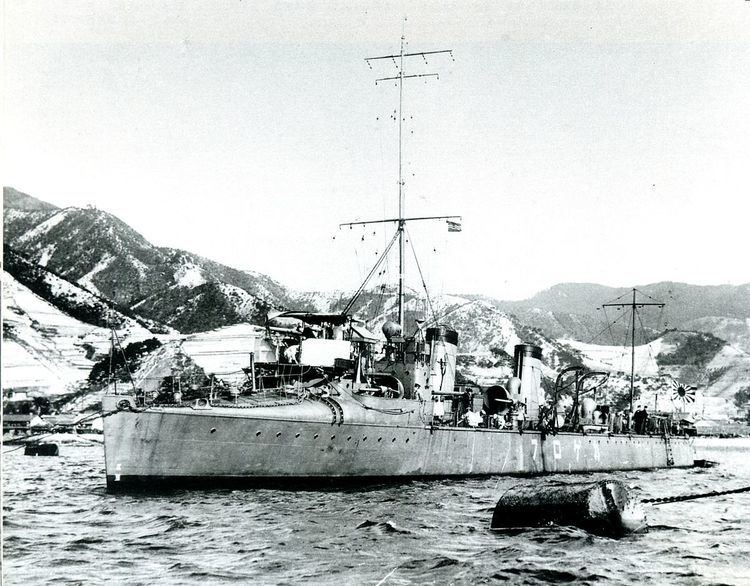Preceded by Ikazuchi class | Succeeded by Akatsuki class | |
 | ||
In commission December 1898 - June 1925 | ||
The Murakumo-class destroyers (叢雲型駆逐艦, Murakumogata kuchikukan) were a class of six torpedo boat destroyers (TBDs) of the Imperial Japanese Navy. The class is also sometimes referred to as the Shinonome-class destroyers (東雲駆逐艦, Shinonomegata kuchikukan).
Contents
Background
In the First Sino-Japanese War, the Japanese navy came to understand the combat effectiveness of small, fast torpedo equipped warships over larger, slower ships equipped with slow-loading and often inaccurate naval artillery. The Murakumo-class vessels were the second class of destroyers procured by the Imperial Japanese Navy, but were purchased almost simultaneously with the Ikazuchi class. Four ships were ordered under the 1896 fiscal year budget, and an additional two under the 1897 budget. All were ordered from John I. Thornycroft & Company in Chiswick, England.
Design
The design of the Murakumo-class destroyers was based on Thorneycroft's two-stack destroyers for the Royal Navy (from 1913 known as the D class) also known as the “Thirty Knotters”. Although slightly smaller than the Ikazuchi class, they had the same armaments.
All Murakumo-class vessels had a flush deck design with a distinctive "turtleback" forecastle that was intended to clear water from the bow during high speed navigation, but was poorly designed for high waves or bad weather. The bridge and forward gun platform were barely raised above the bow, resulting in a wet conning position. More than half of the small hull was occupied by the boilers and the engine room. With fuel and weaponry, there was little space left for crew quarters.
All were powered by triple expansion steam engines for 5,800 shaft horsepower (4,300 kW) and had coal-fired water-tube boilers. Armament was one QF 12-pounder gun on a bandstand on the forecastle, five QF 6 pounder Hotchkiss guns (two sited abreast the conning tower, two sited between the funnels and one on the quarterdeck) and 2 single tubes for 18-inch (460 mm) torpedoes.
Operational history
All six Murakumo-class destroyers arrived in Japan in time to be used during the Russo-Japanese War of 1904-1905. All were present at the Battle of the Yellow Sea and the final crucial Battle of Tsushima.
The Murakumo-class vessels reclassified as third-class destroyers on 28 August 1912, and were removed from front-line combat service. Shinonome was lost during a typhoon off of Taiwan on 23 July 1913.
The five surviving vessels were again used in combat with the start of World War I, during the Battle of Tsingtao and in the operations to seize German colonial possessions in the South Pacific.
After the war, Murakumo and Yūgiri were demilitarized, and used as depot ships in 1919–20, and then as auxiliary minesweepers in 1920. Shiranui, Kagerō and Usugumo were similarly modified in 1923, but all vessels were retired from service and struck from the Navy List by the end of 1925.
